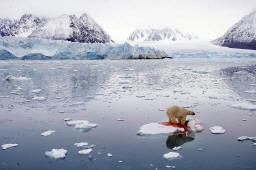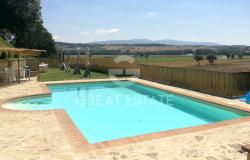Italian scientists created the first ever satellite link-up between the Arctic and the Antarctic on Monday, allowing researchers at bases on the two continents to speak to each other.
Italy's Foreign Undersecretary Alfredo Mantica and his Norwegian counterpart Elisabeth Walaas were at the Airship Italia Arctic research station on the Svalbard Islands for the link-up with the Italo-French Concordia base in Antarctica.
''Today is a historic day,'' the Italian National Research Council (CNR) land and environment department head Giuseppe Cavarretta told colleagues in Antarctica.
''This first connection between the Arctic and the Antarctic is a symbol of the link between the scientific activities of the two bases,'' he said.
The link-up was created to celebrate the 80th anniversary of the flight of Italia, the airship built by the Italian Arctic explorer Umberto Nobile (1885-1978) from which the Italian base takes its name.
Nobile and Norwegian explorer Roald Amundsen were among the first explorers to fly over the North Pole in 1926 in Nobile's Norge airship.
The flight of Italia two years later ended in disaster when the blimp crashed on the return trip from the North Pole to Norway, killing seven of the crew and leaving Nobile and eight others stranded on floating ice for over a month before they were rescued.
Amundsen, who had joined the rescue mission, died during a search for the Italia crew when his sea plane crashed somewhere over the Arctic.
On Friday Cavarretta said Italy will build a 30-metre-high climate change observation tower in the Arctic which will be called the Amundsen-Nobile tower - a twin to an existing observation tower in the Antarctic.
''The name of the new tower underlines the friendship between Nobile and Amundsen but it's also a symbol of the great collaboration between Italy and Norway and the scientific communities in both countries,'' he added.
During the link-up, Italian Ambassador to Oslo Rosa Anna Coniglio Papalia announced that Italy will enter the Arctic Council as an observer in 2009.
The council, established in 1996 to guarantee sustainable development in the Arctic, currently comprises Canada, Denmark, Finland, Iceland, Norway, Russia and the United States.













